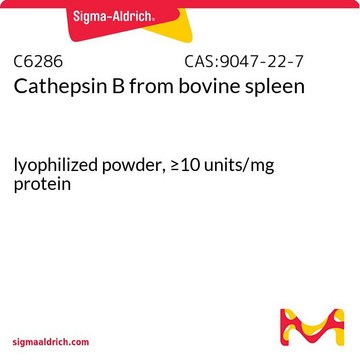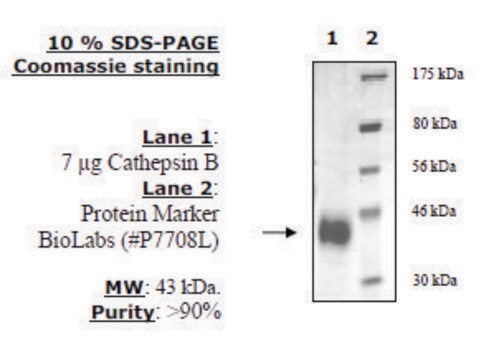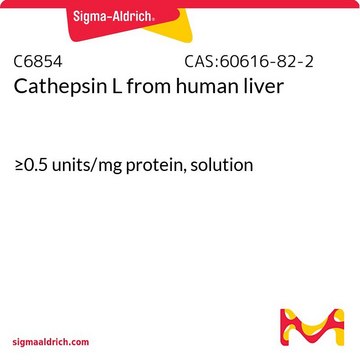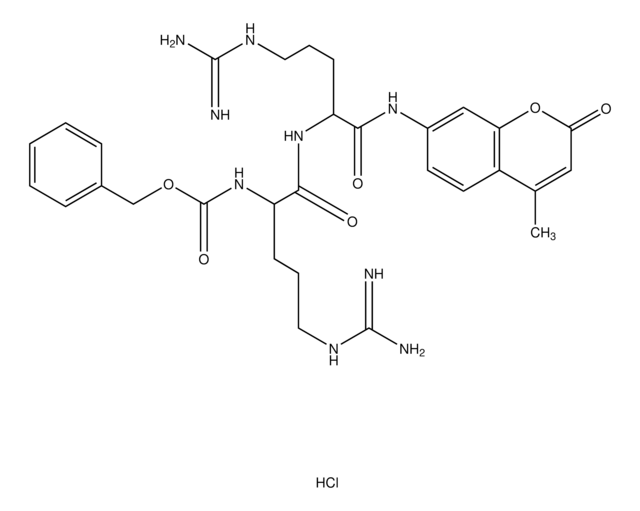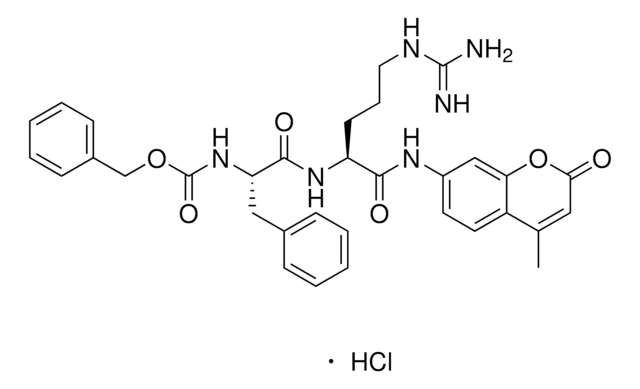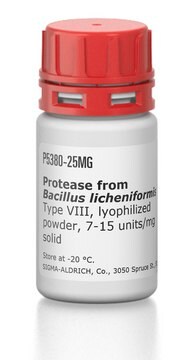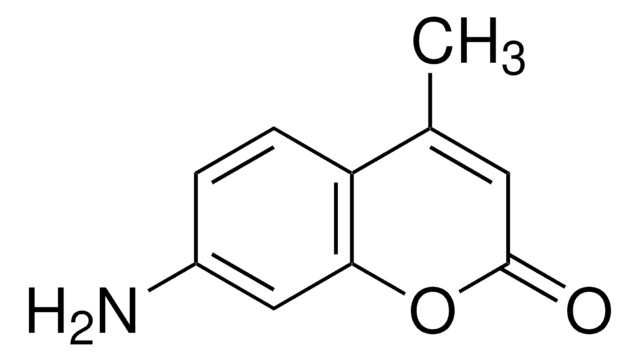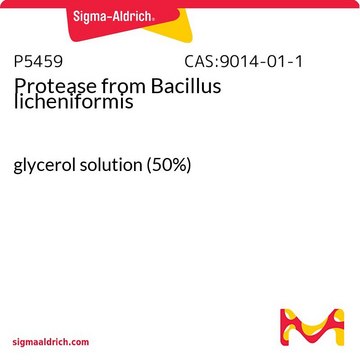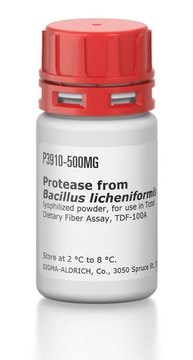C0150
Cathepsin B from human placenta
lyophilized powder, ≥5 units/mg protein
Synonym(s):
Cathepsin B1
Sign Into View Organizational & Contract Pricing
All Photos(1)
About This Item
CAS Number:
MDL number:
UNSPSC Code:
12352204
NACRES:
NA.54
Recommended Products
form
lyophilized powder
Quality Level
specific activity
≥5 units/mg protein
mol wt
24.5 kDa
composition
Protein, ~50% Lowry
solubility
H2O: soluble 1.0 mg/mL, clear
UniProt accession no.
storage temp.
−20°C
Gene Information
human ... CTSB(1508)
General description
Cathepsin B is encoded by the gene CTSB and is located in the human chromosome at 8p23.1. Cathepsin B is a lysosomal proteolytic enzyme of cysteine protease family. It is present in all mammalian cells. It is essential for the intracellular protein turnover.
Application
Cathepsin B from human placenta has been used in the in vitro digestion of modified myelin oligodendrocyte glycoprotein (MOG). It has also been used in determining the effect of cysteine protease inhibitors.
Cathepsin B is a lysosomal cysteine proteinase which hydrolyzes proteins with a broad specificity for peptide bonds. Cathepsin B may be a useful tool in Alzheimer′s research, as it may have a role in the natural defense against the disease . Cathepsin B may be used to cleave procaspase 1 and procaspase 11, and to induce apoptosis in digitonin-permeabilized cells.
Biochem/physiol Actions
Cathepsin B preferentially cleaves at the caboxyl side of Arg-Arg bonds in small molecule substrates. Cathepsin B has been shown to degrade β-amyloid precursor protein into harmless fragments . Cathepsin B inhibition has been shown to limit bone metastasis in breast cancer .
Cathepsin B has been found to cleave procaspase 1 and procaspase 11 and to induce apoptosis in digitonin-permeabilized cells. Translocation of cathepsin B from the cytoplasm to the nucleus contributes to bile salt induced apoptosis of rat hepatocytes. Levels of cathepsin B in PC12 cells significantly decrease 12 to 24 hours after apoptosis is induced.
Unit Definition
One unit will liberate 1 nanomole of 7-amino-4-methylcoumarin from Z-Arg-Arg 7-amido-4-methylcoumarin per min at pH 6.0 at 40 °C.
Physical form
Lyophilized powder containing phosphate buffer salts
Preparation Note
Dissolves in water at 1 mg/mL concentration, yieliding a clear solution.
inhibitor
Product No.
Description
Pricing
Storage Class Code
11 - Combustible Solids
WGK
WGK 3
Flash Point(F)
Not applicable
Flash Point(C)
Not applicable
Choose from one of the most recent versions:
Already Own This Product?
Find documentation for the products that you have recently purchased in the Document Library.
Customers Also Viewed
Cathepsins B, H, L and cysteine protease inhibitors in malignant prostate cell lines, primary cultured prostatic cells and prostatic tissue
Friedrich B, et al.
European Journal of Cancer, 35(1), 138-144 (1999)
Viktorija Herceg et al.
Molecules (Basel, Switzerland), 25(18) (2020-09-24)
Cyclopeptidic chemotherapeutic prodrugs (cPCPs) are macromolecular protease-sensitive doxorubicin (DOX) prodrugs synthesized from a cyclodecapeptidic scaffold, termed Regioselectively Addressable Functionalized Template (RAFT). In order to increase the chemotherapeutic potential of DOX and limit its toxicity, we used a Cathepsin B (Cat
Mixed gastric carcinomas show similar chromosomal aberrations in both their diffuse and glandular components.
Carvalho B, et al.
Analytical Cellular Pathology, 28(5-6), 283-294 (2006)
Scavenger Receptor A Mediates the Clearance and Immunological Screening of MDA-Modified Antigen by M2-Type Macrophages
Warnecke A, et al.
Neuromolecular Medicine, 19(4), 463-479 (2017)
Sarah Mueller-Steiner et al.
Neuron, 51(6), 703-714 (2006-09-20)
Alzheimer's disease (AD) may result from the accumulation of amyloid-beta (Abeta) peptides in the brain. The cysteine protease cathepsin B (CatB) is associated with amyloid plaques in AD brains and has been suspected to increase Abeta production. Here, we demonstrate
Articles
Enzymatic Assay of Cathepsin B
Our team of scientists has experience in all areas of research including Life Science, Material Science, Chemical Synthesis, Chromatography, Analytical and many others.
Contact Technical Service
